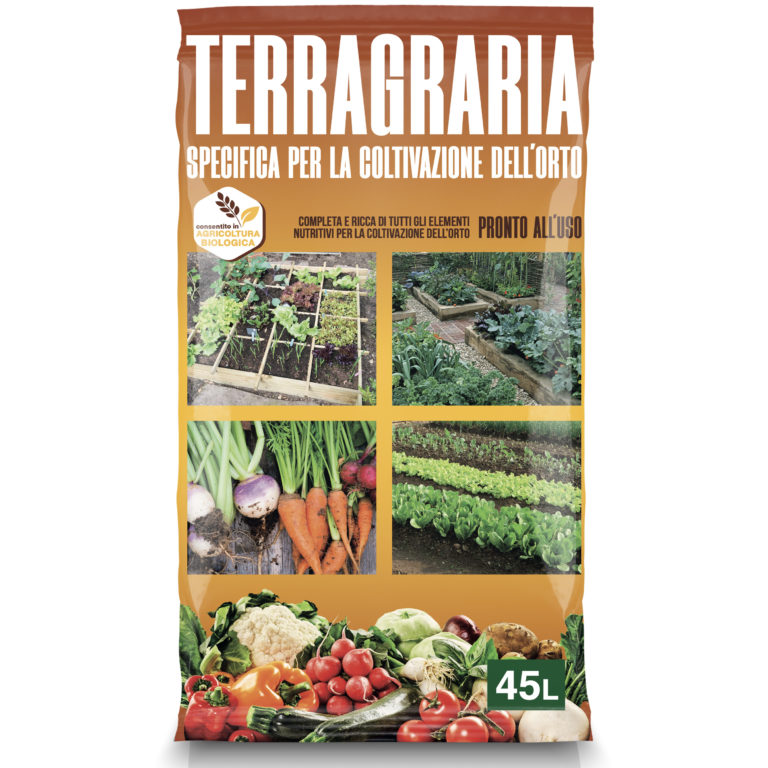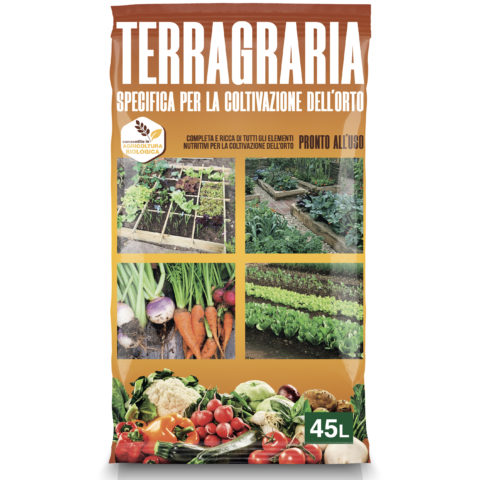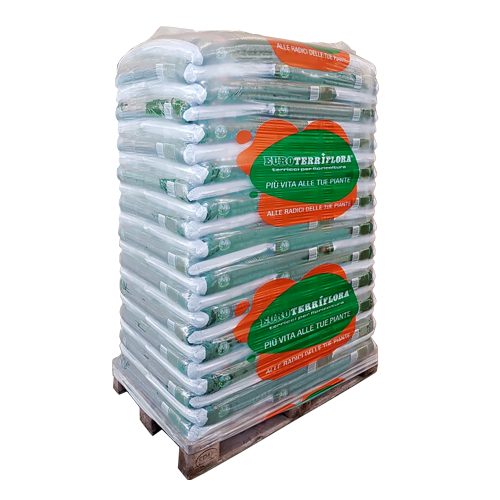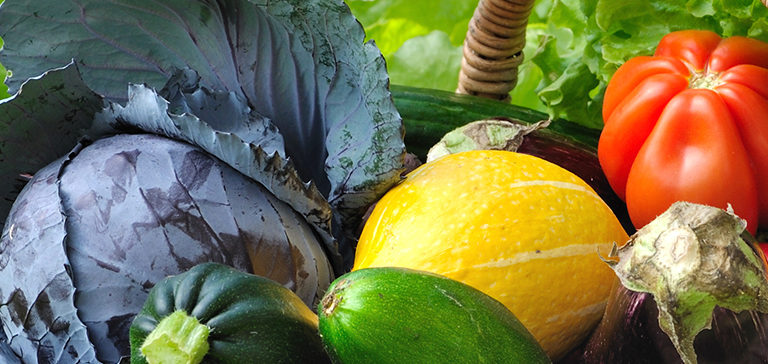TerrAgraria Bio Specific for the Vegetable Garden

Components
The product is a growing substrate obtained by mixing, in appropriate percentages, natural soil improvers enriched with organic fertilizer with the addition of sand.
Characteristics
TerrAgraria Bio is a complete product, rich in all organic nutrients for your vegetable garden, ready to use for sowing and replanting of vegetable plants.
Without the need to add additional fertilizers, it ensures both the rooting and the vegetative development, helping you until the harvest of your vegetables.
Ideal for the most demanding hobbies.
Instructions for use
TerrAgraria Bio can be used for all vegetables that can be grown in the garden.
Cultivable vegetables:
- Leafy and ribbed vegetables (lettuce, turnip greens, celery, radicchio, chard, spinach, savoy cabbage arugula, leek, fennel, etc…)
- Fruit, flower, and seed vegetables (tomato, eggplant, zucchini, bell pepper, artichoke, pumpkin, broccoli, cucumber, hot peppers, chickpeas, cauliflower, etc…)
- Root, bulb, and tuber vegetables (onions, carrots, potatoes, garlic, beets, celeriac, radishes, etc…)
LEAF VEGETABLES
Leaf vegetables are all those vegetables that are grown for the consumption of the leaves. There are many vegetables of this type, especially salads which are consumed raw, but there are also many vegetables to cook, such as chard, savoy cabbage, and spinach. Let’s also include ribbed or stalk vegetables, such as rhubarb and celery. Leaf vegetables also include herbs.
Growing leafy greens and salads
Leaf vegetables are often plants with a fairly short cultivation cycle since they do not have to bear fruit. They have annual cultivation since in the second year the vegetable plant produces the flower and the seed. TerrAgraria Bio has the right content of nutrients needed for excellent leaf development. This type of vegetable plant generally requires constant watering, soil with good drainage, and moderate sun exposure. They are mostly plants that suffer from too much heat and in summer months can benefit from shading nets.
When growing leaf vegetables, it is necessary to pay particular attention to insects: larvae of beetles and lepidopterans, as well as slugs, can ruin the leaves and ruin the harvest as they are very hungry. However, toxic insecticides should not be used, as the chemical substances would remain on the leaves which will be consumed. Many salads at the time of harvesting are removed from the garden because practically the whole plant is used, discarding only the roots. Leaf vegetables, such as spinach or salad, do not preserve for a long time once harvested. For this reason, it is better to consider a scalar seeding, which guarantees a prolonged harvest.
FRUIT, FLOWER AND SEED VEGETABLES
Fruit, flower and seed vegetables are a vast and heterogeneous group of vegetables, they include some of the main garden plants: for example, they include all legumes and cucurbitaceous plants, almost all solanaceous plants, and many other vegetables. There are plants whose fruit is eaten raw, such as watermelon and cucumber, and others where vegetables have to be cooked, such as eggplants and peppers. In other cases, it is possible to choose whether to cook or not the fruit, for example, tomatoes.
Growing fruiting vegetables
Fruit vegetables are plants that generally have a medium-long cultivation cycle since you have to wait for the plant to complete its reproduction, flower, and bear fruit. TerrAgraria Bio will be perfect for the cultivation of these plants as they consume a lot of nutrients and therefore require fertile soil enriched by good fertilization.
Flowering and fruit formation are periods in which the plant usually needs more water, therefore it is necessary to be careful in watering, and they also need more sunlight, therefore it is better to plant in a sunny garden plot. Anticipating the seeding with a seedbed often brings good results, prolonging the flowering period and therefore maximizing the harvest.
In these cultivations it is necessary to understand the right moment of harvesting, avoiding taking fruits that are too unripe or rotten, or seeds that are too dry or too fresh. The fruits are usually kept for a short time in the refrigerator, whereas vegetables from seeds last longer and can also be kept in the pantry, as long as the place is cool and dry.
ROOT, BULB AND TUBER VEGETABLES
These are the vegetables that grow underground: tubers, such as potatoes and Jerusalem artichokes, but also root vegetables, such as carrots and parsnips, or bulb vegetables such as onions.
Growing vegetables that grow underground
If we want vegetables to grow better under the ground, it is usually very important to thoroughly work the soil of the garden before planting them. Digging deep makes the soil less compact and more draining, two important things for root and tuber vegetables. The composition of TerrAgraria Bio will help the underground part of the plant to expand and swell. If there is water stagnation in the garden there is a risk of roots rotting (or of the tuber bulb), for this reason when growing root vegetables, it is useful to prepare drainage channels or think about raised beds. Most root vegetables and tubers have good preservation, therefore they are crops that can be consumed within a pretty long time after harvesting, after cleaning them from the soil, and when stored in a cool and dry place.
Availability TerrAgraria Bio Specific for the Vegetable Garden


